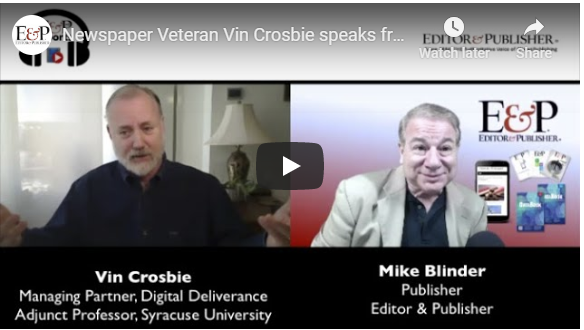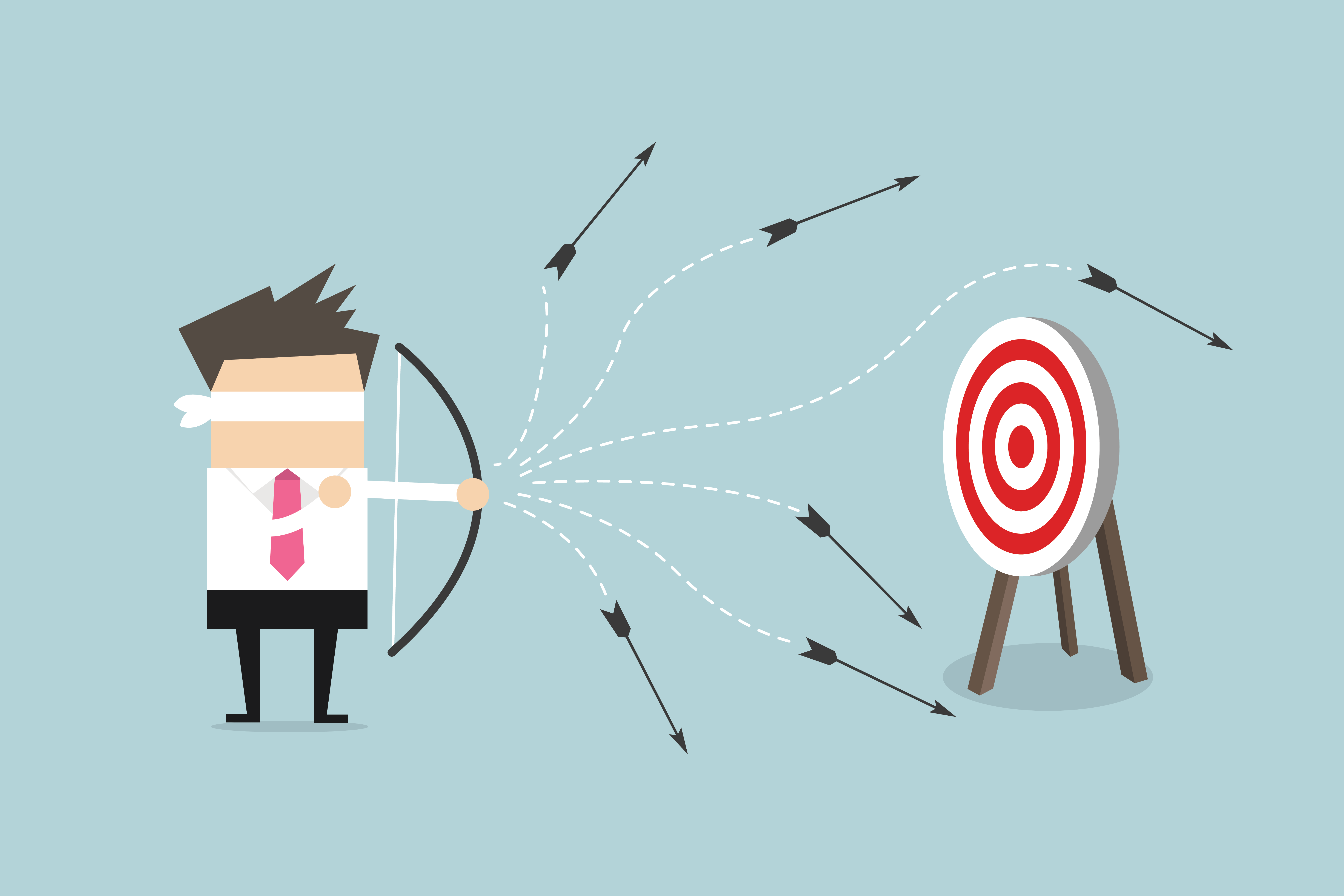Saying Good-Bye to Wired and National Geographic
Why I’ve finally cancelled my subscriptions to Wired and to National Geographic magazines.
Why I’ve finally cancelled my subscriptions to Wired and to National Geographic magazines.

The passage of time proves whether or not a consultant’s foresight and advice were accurate. Judge for yourself if mine were.

Reality is that the world’s newspaper industry, indeed all of the Industrial Era’s legacy industries that are colloquially referred to as the Mass Media, have ultimately failed to adapt to the New Media environment, despite more than 25 years of endeavors, to…

Journalism professors who themselves have no academic training or professional experience in business yet who either believe they have solutions to the news industries’ business problems or who without that training or experience teach ‘media entrepreneurship’ dilute and interfere with the real solutions to the actual problems of media management and news business models.
As yet another magazine ceases publication in print, let’s discuss the general reason why the Mass Media is imploding and being superseded by Individuated Media.
I’ve spend much of the morning today watching a seminar in which eight daily newspapers from different European nations present their endeavors to generate subscriptions to their websites. I was perhaps the only one of the 1,200 people–virtually all from other daily newspapers, watching this online seminar not for its tips about how to generate online subscriptions but to assess how still myopic and misguided is the world’s newspaper industry. That industry, an integral product of the Industrial Era, botched its adaptation to the Information Era (an adaptation that nonetheless would have transformed that industry into something else). The error that botched its adaptation was that the industry’s ‘digital’ (i.e., ‘online’) pioneers (1995-2005) myopically misperceived computer-mediated technologies merely as means to delivery texts, still photos, and graphics, without purchasing, printing, and distributing paper editions. In other words, they saw online merely as a electronic distribution mechanism and websites as as non-paper versions of their traditionally printed editions.

Consider the predicament Christian monks working in their scriptoria faced in middle of the 15th Century from Johannes Gutenberg’s invention of the moveable-type printing press. It will illuminate the challenge the publisher and broadcasters of Mass Media faced today. Their scriptoria’s hallowed…

The world’s media industries are more than a decade overdue to face, acknowledge, and act upon these nine bare facts about the epochal transformation of the media environment as the Industrial Era ends and the Information Era begins..

The U.S. newspaper industry’s trade journal interviews Vin Crosbie about that industry’s bright past and dim future.

Computer mediation means mediation, not simply electronic delivery. It means sorting and processing information on massive scales, which is what computerized technologies do best. They can sort, process, and deliver an individualized (i..e, individuated) supply of news to fit each individual consumer’s unique mix of needs, interests, and tastes. Computer-mediated technologies do this algorithmically. Computer-mediation is the hallmark of the dawning Informational Era. It makes no sense for legacy media industries not to embrace, adopt, and utilize these historically newfound capabilities. To use computer-media technologies merely as a means of electronic delivery is akin to using horses to pull an automobile along a paved road: a myopic misuse of capabilities.
Any technologies that can supply a consumer with the most precise mix of stories that match his own individual needs, interests, beliefs, and tastes, will triumph over technologies less precise. That is the reason why Google and other information search engines, why Facebook and other social media services, and why topical or ‘niche’ services that offer individuated feeds of music or other genres of information, have become so explosively successful during the past 20 years. Although they were not initial designed to provide consumers with individuated feeds of news, their computer-mediated algorithmic software can do so, as literally billions of consumers have discovered. This is why consumers now use such computer-mediated Individuated Media services as their predominant means by which they obtain news, entertainment, and other information, to the grave distress of legacy media industries that failed to adopt such technologies. That is how daily newspapers lost the future.

The financial disaster unforlding for the daily ewspaper industries due to the coronavirus pandemic is a late-stage event in an even greater struggle that has been underway in the media environment for more than 25 years. As the Industrial Era wanes and the Informational Era dawns, the predominant means by which most people under age 40 in developed countries obtain news, entertainment, and other information is now via Individuated Media rather than Mass. Click the headline to read this essay to find out what Individuated Media are and why they are supersededing Mass Media.

The Rise of Individuated Media Vin Crosbie S. I. Newhouse School of Public Communications Syracuse University Syracuse, New York, U.S.A. [An Adobe Acrobat (PDF) version of this paper is available at Individuated.Guru] Author Note: Paper presented at the Rethinking Theories and Concepts of Mediated…

Perhaps I’m the only dissident among the approximately 250 media scholar attending the World Media Economics and Management Conference held this week in Cape Town, South Africa? The chosen theme of the conference is ‘In the Age of Tech Giants: Collaboration or…
Here is a quick, anecdotal example of the difference in legal rights between Mass Media and Individuated Media. I am an American who lives within sight of the building in which ‘Saturday Night Live’ is filmed. I would have like to see this…

In 1993, after two decades working for newspapers’ print editions and for two of the world’s major international news services, I switched the focus of my career to working full-time on journalism’s transition from print and terrestrial or cable and satellite broadcasting…

Previous webpage: The Significance of Web 1 (‘Web.1.0’) and Web 2 (‘Web 2.0’) Why did more than three billion people begin routinely using the Web when they were already being served news, entertainment, and other information by the publications and broadcasts of…

My reputation as a New Media consultant to the news industry, including my appointment since 2007 to teach postgraduate New Media Business at Syracuse’s Newhouse School, largely result from work I did long ago. For ten years beginning in 1993, I helped…
My opening keynote speech from EPublishing Innovations Forum 2008, London, May 7, 2008. Why 1.3 billion people have gravitate online despite their already having access to mass media in much more convenient formats than online. Why the fragmentation of audiences is an illusion. Why traditional newspapers’ and news magazines’ circulations, and news broadcasts’ viewerships, must ineluctably evaporate. Why most newspapers’ and news magazines’ and news broadcasters’ Web sites won’t save their companies. Why people will be even better served by New Media than by Mass Media. And why the change today is even greater than that during Gutenberg’s era.
At the root of most publishing and broadcasting companies problems understanding and adapting to the New Medium is they actually misunderstand what a medium is. I’ve long been reluctant to explain this misunderstanding because I’ll need a long post to do so. This is it, a new version of my 1998 essay What is New Media?. It’s long, but I consider it the most important thing I have ever written except for the original essay, and hope you’ll forebear its length. I need to have this new version online because I plan to refer to it in future postings, specifically those about what radical changes that media companies need to implement.